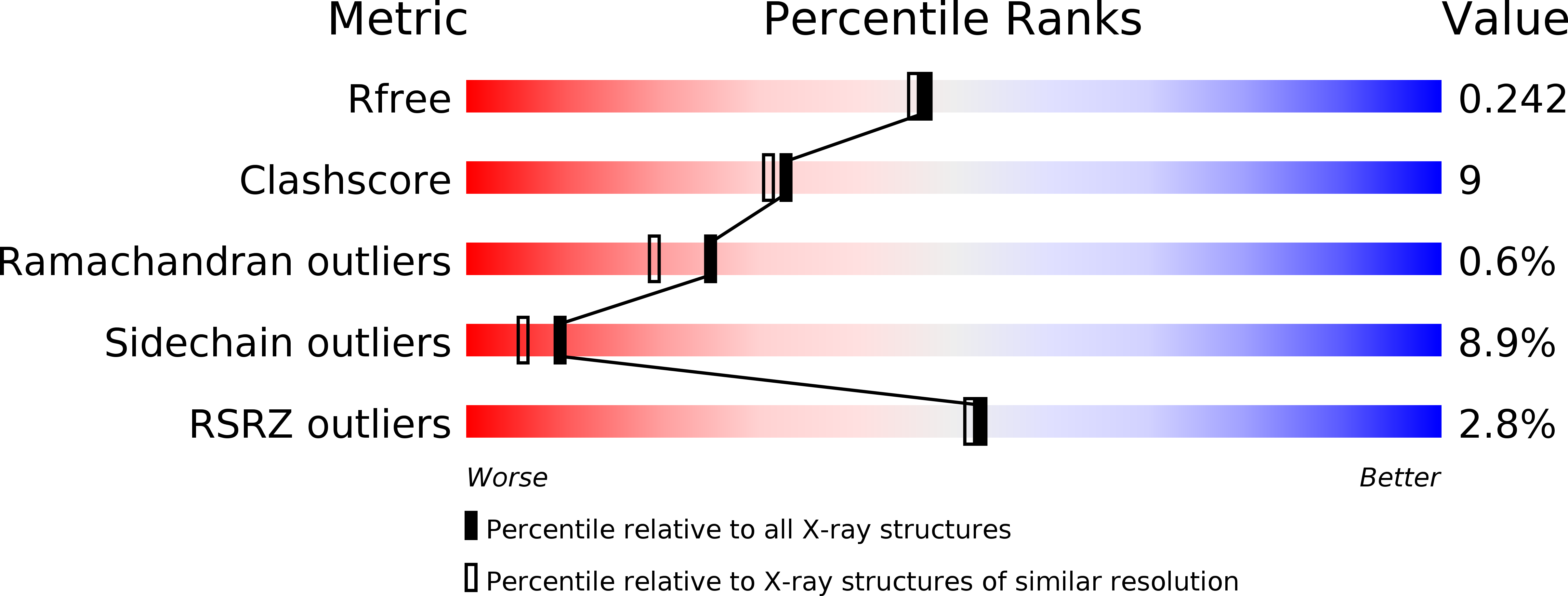The crystal structure of nitrophorin 2. A trifunctional antihemostatic protein from the saliva of Rhodnius prolixus
Andersen, J.F., Montfort, W.R.(2000) J Biol Chem 275: 30496-30503
- PubMed: 10884386
- DOI: https://doi.org/10.1074/jbc.M002857200
- Primary Citation of Related Structures:
1EUO - PubMed Abstract:
Nitrophorin 2 (NP2) (also known as prolixin-S) is a salivary protein that transports nitric oxide, binds histamine, and acts as an anticoagulant during blood feeding by the insect Rhodnius prolixus. The 2.0-A crystal structure of NP2 reveals an eight-stranded antiparallel beta-barrel containing a ferric heme coordinated through His(57), similar to the structures of NP1 and NP4. All four Rhodnius nitrophorins transport NO and sequester histamine through heme binding, but only NP2 acts as an anticoagulant. Here, we demonstrate that recombinant NP2, but not recombinant NP1 or NP4, is a potent anticoagulant; recombinant NP3 also displays minor activity. Comparison of the nitrophorin structures suggests that a surface region near the C terminus and the loops between beta strands B-C and E-F is responsible for the anticoagulant activity. NP2 also displays larger NO association rates and smaller dissociation rates than NP1 and NP4, which may result from a more open and more hydrophobic distal pocket, allowing more rapid solvent reorganization on ligand binding. The NP2 protein core differs from NP1 and NP4 in that buried Glu(53), which allows for larger NO release rates when deprotonated, hydrogen bonds to invariant Tyr(81). Surprisingly, this tyrosine lies on the protein surface in NP1 and NP4.
Organizational Affiliation:
Department of Biochemistry, University of Arizona, Tucson, Arizona 85721, USA.
















